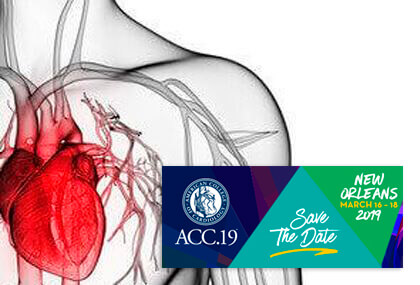Courtesy of Dr. Carlos Fava.
Self-expanding supraannular aortic valves have proved to be superior to surgery in high-risk patients and noninferior in intermediate-risk patients. However, the current challenge is posed by low-risk, generally younger, patients. In that sense, our purpose is to determine device effectiveness and safety in terms of mortality and stroke rates (which are low with surgery), their risk for complications, and—particularly—their durability.
 This was a multicenter study that enrolled patients with severe aortic stenosis who were randomized 1:1 to transcatheter aortic valve replacement (TAVR) with CoreValve, Evolut R, or Evolut PRO (Medtronic) vs. aortic valve surgery.
This was a multicenter study that enrolled patients with severe aortic stenosis who were randomized 1:1 to transcatheter aortic valve replacement (TAVR) with CoreValve, Evolut R, or Evolut PRO (Medtronic) vs. aortic valve surgery.
The primary endpoint was a composite of death or disabling stroke at 24 months, and the secondary safety endpoint at 30 days was a composite of death, disabling stroke, major cardiovascular complications, life-threatening bleeding, and stage 2 or 3 acute renal failure.
Read also: TAVR in Low-Risk Patients with “Zero” Mortality and “Zero” Stroke.
Originally, each group had been assigned 734 randomized patients, but 12 subjects were excluded from the TAVR group and 53 from the surgery group. Ultimately, there were 725 patients in the TAVR group and 678 in the surgery group.
Patient characteristics were similar and the mean age was 74 years. Only 39% of patients were female; 30% had diabetes; 5% had a prior infarction; 2.2% had undergone prior myocardial revascularization surgery (MRS), and the Society of Thoracic Surgery predicted risk of mortality was 1.9%.
At 30 days, patients who underwent TAVR had a lower incidence of stroke (0.5% vs.1.7%), bleeding (2.4% vs. 7.5%), acute kidney injury (0.9% vs. 2.8%), and atrial fibrillation (7.7% vs. 35.4%), but a higher incidence of severe or moderate aortic regurgitation (3.5% vs. 0.5%), and new pacemaker implantation (17.4% vs. 6.1%).
At one year, there were no differences in the rates of stroke, endocarditis, bioprosthetic-valve thrombosis, or reintervention. The Doppler echocardiography showed lower aortic-valve gradients and larger effective orifice areas (8.6 mmHg vs.11.2 mmHg and 2.3 cm2 vs. 2.0 cm2).
After a 24-month follow-up, there were no differences in the primary endpoint: 5.3% for the TAVR group and 6.7% for the surgery group, thus meeting noninferiority criteria (difference, −1.4 percentage points; 95% Bayesian credible interval for the difference, −4.9 to 2.1; posterior probability of noninferiority, >0.999). The mortality rate was 4.5% for both groups and the disabling stroke rates were 1.1% vs. 3.5%.
Conclusion
In patients with severe aortic stenosis who are at low surgical risk, TAVR with a self-expanding supraannular bioprosthesis was noninferior to surgery regarding the composite endpoint of death or disabling stroke at 24 months.
Courtesy of Dr. Carlos Fava.
Original title: Transcatheter Aortic-Valve Replacement with a Self-Expanding Valve in Low-Risk Patients.
Reference: Jeffrey J. Popma et al. N Eng J Med DOI: 10.1056/NEJMoa1816885.
Get the latest scientific articles on interventional cardiologySubscribe to our weekly newsletter
We are interested in your opinion. Please, leave your comments, thoughts, questions, etc., below. They will be most welcome.





